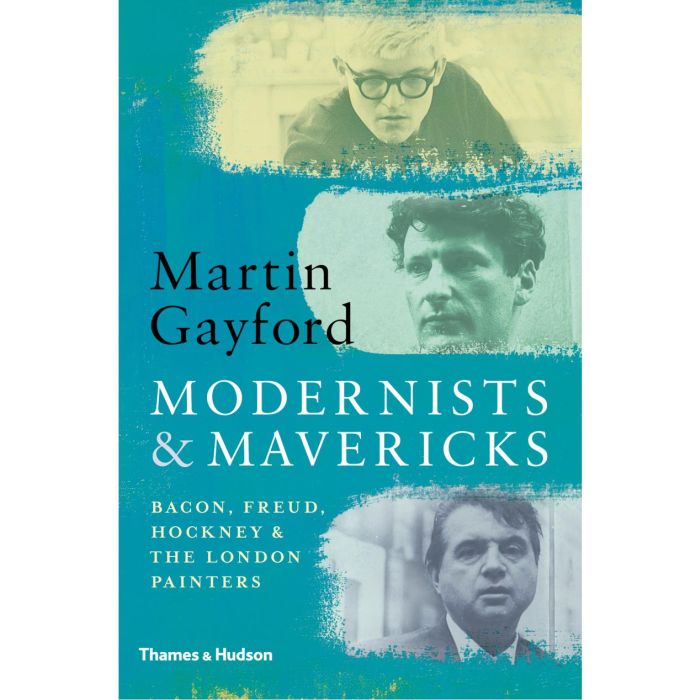My Cart
Your cart is empty
Looks like you haven't made your choice yet.
- Subtotal
Modernists and Mavericks

Bacon, Freud, Hockney and the London Painters 1945-70
- Thames & Hudson
- Expo: Feb. 2018, Tate, London (Bacon & Freud)
- by Martin Gayford
More Information
| Publisher | Thames & Hudson |
|---|---|
| ISBN | 9780500239773 |
| Author(s) | Martin Gayford |
| Publication date | April 2018 |
| Edition | Hardback |
| Dimensions | 234 x 153 mm |
| Pages | 304 |
| Language(s) | Eng. ed. |
| Exhibition | Tate, London (Bacon & Freud) |
Description
The development of painting in London from the Second World War to the 1970s is a story that has never been told before as a single narrative. R.B. Kitaj’s proposal, made in 1976, that there was a ‘substantial School of London’ was essentially correct, in that there was indeed a critical mass major artists then at work in the city. It caused confusion, however, because it seemed to imply that there was a movement or stylistic group at work, where there was no such entity. There were both figurative and abstract painters working in the city – no stylistic label could be stretched to cover Francis Bacon and also Bridget Riley.
Gayford’s new book explores this period based on an exceptionally deep well of first-hand interviews, often unpublished, with the artists. His is therefore in part an oral history that gathers the statements of important witnesses and participants such as the late Victor Pasmore, John Craxton, Lucian Freud, Frank Auerbach, Allen Jones, R.B. Kitaj, Euan Uglow, Howard Hodgkin, Terry Frost, Gillian Ayres, Bridget Riley, David Hockney, Frank Bowling, Leon Kossoff, John Hoyland and Patrick Caulfield. But Gayford also teases out the thread weaving these individual lives together, and demonstrates how and why, long after it was officially declared dead, painting lived and thrived in London; how, simultaneously aware of the influences of Jackson Pollock, Giacometti and also – through the teaching passed down at the major art school – the traditions of Western art from Piero della Francesca to Picasso and Matisse, the post-war painters were bound by their confidence that this ancient medium, in opposition to photography and other media, could do fresh and marvellous things. They asked the question ‘what is painting?’ and explored in their diverse ways, but with equal passion, the possibilities of paint.

Modernists and Mavericks
